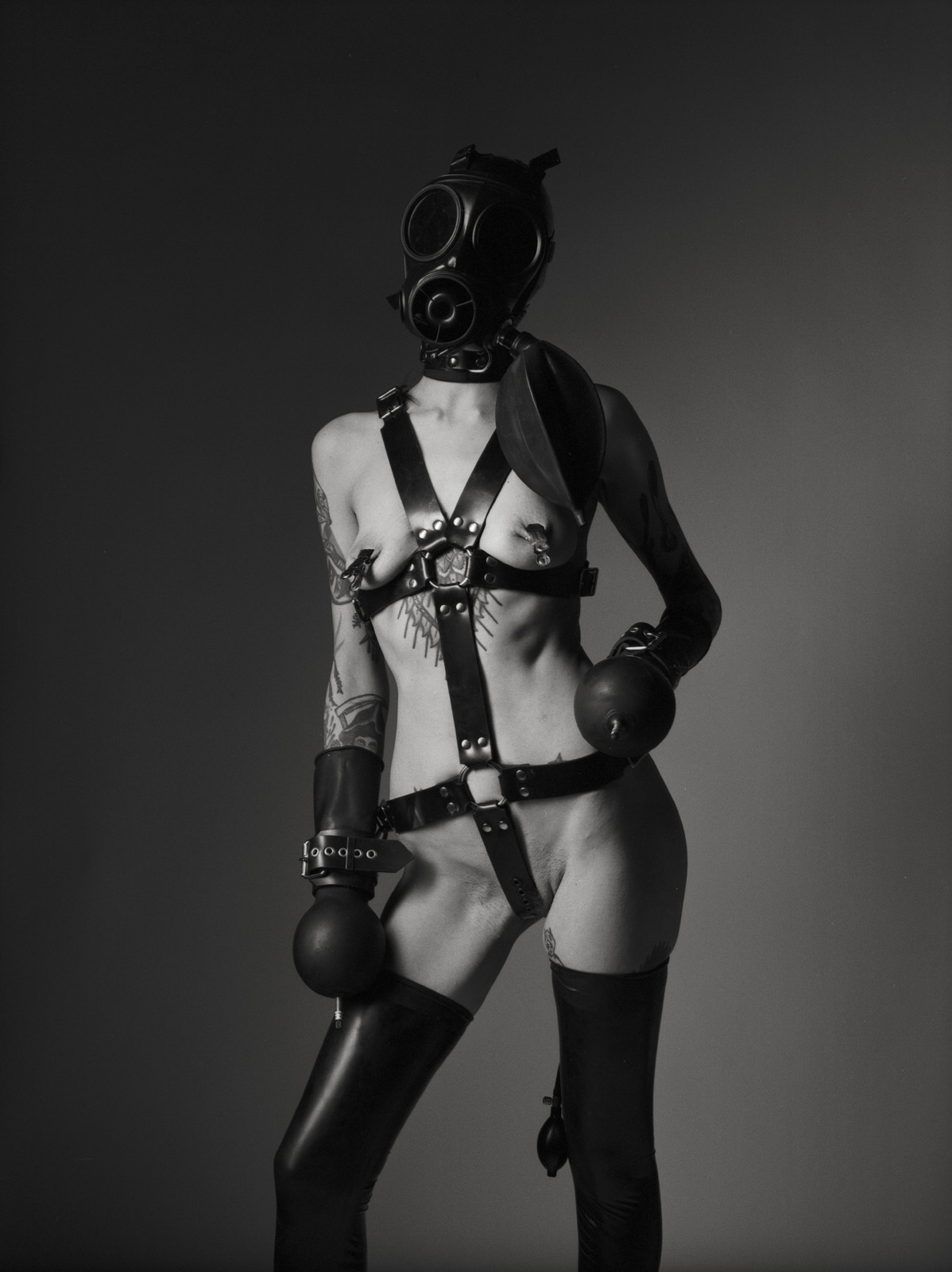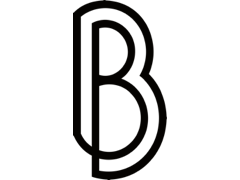
Artist Interview: Soren Jahan
As the opening of the exhibition draws closer, I have yet more interviews to share with you from artists who took the time to answer my questions.
I wanted to ask questions that introduce the artists and their work, but also their reflections and thoughts about the theme: ‘fetish’, and it’s relationship to Berlin in particular.
Soren Jahan has provided really interesting responses to my questions, so check it out…!
What is your background? Perhaps you could briefly introduce yourself and your practice?
I have been living in Berlin since 2013, and began casually with photography in 2018. At first I worked mainly with friends and a few people who have reached out to me, but soon it became became a passion of mine. I was very happy to have a way both to capture my own sense of aesthetic beauty in the context of alternative sexuality / fetishism, as well as to share this world of mine with people both new to the scene and with deeper backgrounds in it. The part-time job I have at Blackstyle Latex also led me to have some opportunities to add to my collection of pieces and accessories, even leading to some paid collaborative opportunities that inspired me to develop this project further. Photography also allowed me to put certain obsessive tendencies I have to a healthy, productive use – I gave gone very deep into the technical understandings of how film, development techniques, and lenses all come together to bring certain results, and am still learning every day.
Can you tell us a bit about this work?
This work was produced in March of 2021 as part of an ongoing collaboration with my partner in our studio in Alt-Mariendorf, dealing with the convergence of editorial / fine-art aesthetics and the accessories and scenarios with which we express our intimacy with each other. This particular work and styling were quite spontaneous, flowed in a natural way, and to me feel like one day’s entry in the beautiful, tumultuous diary of our love story. There are memories attached to every shoot but the ones with my partner have a layer of personal meaning to me – the journey that we have made together, the trust that we have built in order to make a shoot like this possible are what make the image special. In this case it was not a model who I styled and posed to create some abstract idea of sexuality or beauty. There’s nothing wrong with that, it’s absolutely a valid form of artistic expression and I have certainly made images in that way as well. But what I / we are trying to show here is something distinct from that while still, in this case, working within a formal portraiture style.
What does ‘fetish’ mean to you?
Fetish is a loose term but for me it simply means the enjoyment of something, usually alternative clothing styles or modes of expressing intimacy, in a shameless, hedonistic way. People all have their own personal relationships to fetishism, all along a spectrum between simple interest and curiosity and deep passion / obsession. I would say I fall somewhere in the middle – I don’t wear latex in my day to day life but it’s been deeply encoded in my sexuality since my youth as a means of transcending the boredom and oppression of everyday life. Fetishism gives the possibility (especially with latex and masks) to radically break free from the social constructs of personhood, socially mandated rules of engagement with other people, and to unlock a plane of sexiness that also gains flavor and depth from transgressiveness.
What made you apply for this call in particular?
I have had some friends hang work here in the past and felt it to be a welcoming, respectful home for this kind of material. It’s the first time I’ve made any kind of request to be exhibited and I very much appreciate the opportunity to have people see work that I have created with my own hands, in my own tiny darkroom in my kitchen, with film that I shot and developed by hand. For me there’s no comparison between seeing something on your smartphone and having the direct physical product of someone’s labor hanging in front of you, in real space.
Do you feel the discussion around fetishes is a balanced one, or do you think it often comes from one particular perspective?
I actually don’t feel like there’s much of a public discourse about fetishism in particular. I see latex appearing more often in both the mainstream media as well as references to BDSM practises, but I won’t fold fetishism into BDSM because it’s only one particular aspect or expression of it. For sure there’s much talk about safety, consent, communication, and all of that, and I hope that it leads to more acceptance of this kind of alternative lifestyle. However, I’m not a researcher in this subject and can’t speak to whether the discussion of fetishism only comes from one particular perspective or not. In the end the only perspective we can ever speak about with authority is our own, and that also comes with the territory when creating art.
Do you think Berlin has a unique connection to fetishism, if so why?
Since my arrival in Berlin I got the general impression from people, particularly when it comes to latex, that the “glory days” of the city have been over for at least a decade. While I am happy to see many brilliant new designers creating new works out of this material, I also sense that there’s an effort to differentiate their work from this discourse of “fetishism” in the traditional sense – hoods, gas masks, full enclosure, and the obsessive immersion in the material. This is totally fair, since not everyone comes from this kind of background, and to me a diversification of approaches or understandings of this material is never a bad thing. However, this doesn’t mean that fetishists can’t find their own special delight in the material, no matter what its original intended use or the context in which it was created.
When I used to go clubbing more often, I was usually the only one wearing latex, and most often the only one wearing something as “extreme” as a gas mask or a hood covering my face, but I also can’t speak to the city outside of my own limited experiences. I’m sure there’s much more going on, particularly in the gay scene, that I’m not familiar with and can’t give a fair assessment of, but at least based on what I have seen from my time working at Blackstyle, there does seem to be quite much more of a presence. It’s safe to say Berlin has certainly been known as a historical hotspot of kink and various alternative subcultures, and in some way, I would like to think that my own work or personal life continues in that spirit. It’s certainly one of the most sexually tolerant cities I can think of at the moment, and more than once I’ve seen parents gently explaining to their children that either me or someone I’m shooting in full latex is simply wearing a different kind of clothes, if they’re not giving us adorable compliments about how chic we look!
How do you feel about exhibiting work online instead of in a space?
Instagram has so far been the only steady way for me to show my work and despite the constant hassle of their algorithms, I can’t complain for the amount of interesting, inspiring people and designers I have been able to connect with. My heart is really in the hand craft aspect of work, though, and I hope to have more chances to connect with audiences through physical materials I have made with my own two hands. That’s also why I don’t shoot digitally – I just enjoy it less and it feels less intimate to me. That said, it’s safe to say that in this digital age, things like NFT’s are changing the discourse of what constitutes art and expanding the boundaries of what forms of exhibition are possible. I’ll wait and see where things go but for now, the internet is still not my central focus besides the absolute necessity of providing an easily accessible portfolio.
What are you looking for from an exhibition, besides selling work?
I have been very happy and intrigued to see so many different perspectives and artistic styles dealing with a theme that has been a defining part of my adult life! In a larger context, though, I’m interested in seeing more of the mechanics of how people engage with work, to help inform my own creative process and learn about what’s possible. Ideally an exhibition will also challenge people who see it, beyond just intriguing or tantalizing them.
Do you ever get nervous about showing work in an exhibition?
I wouldn’t say I feel nervous about it, no.
Have you ever shown at The Ballery before?
Nope! But I’m happy to!
